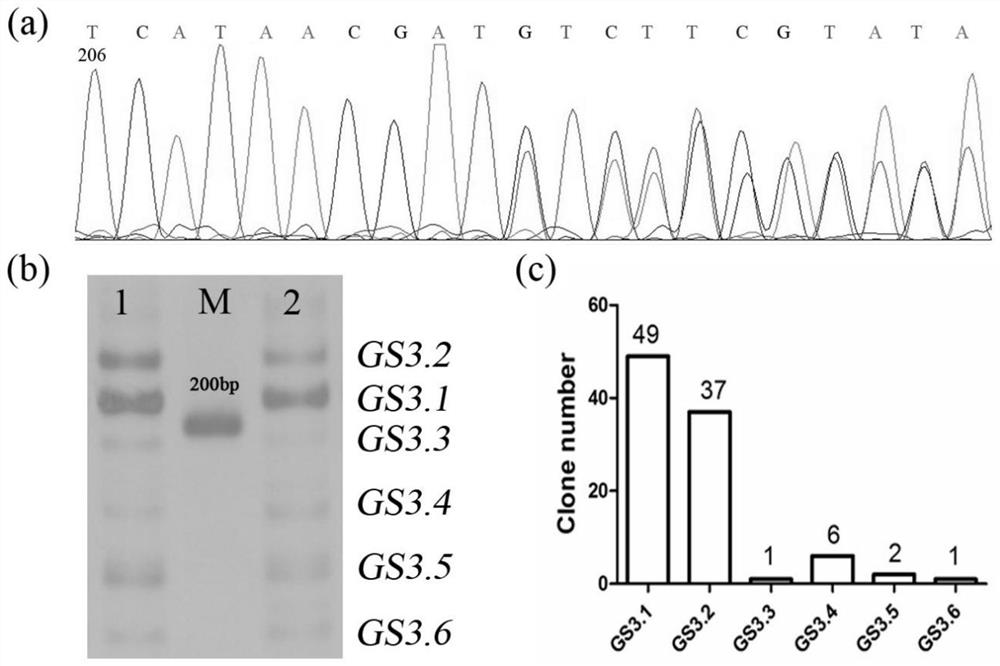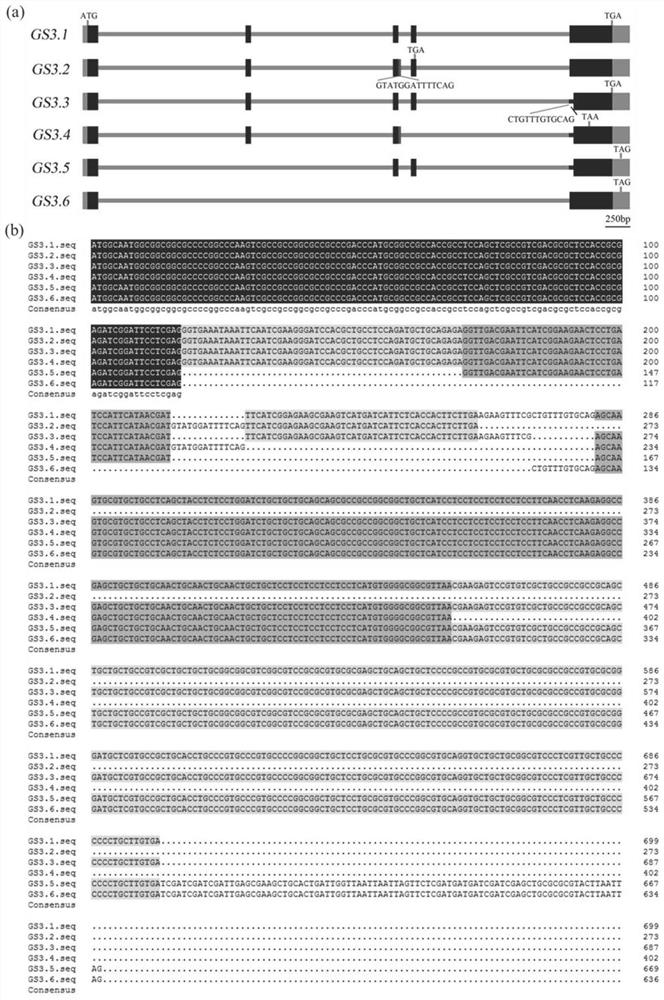Application of rice spliceosomes GS3.2 in regulation and control of rice grain traits
A rice grain trait, GS3.2 technology, applied in the field of bioengineering, can solve problems such as unclear functional differentiation mechanism, and achieve the effect of maintaining normal size
- Summary
- Abstract
- Description
- Claims
- Application Information
AI Technical Summary
Problems solved by technology
Method used
Image
Examples
Embodiment Construction
[0026] In order to make the object, technical solution and advantages of the present invention clearer, the present invention will be further described in detail below in conjunction with the accompanying drawings and embodiments. It should be understood that the specific embodiments described here are only used to explain the present invention, not to limit the present invention.
[0027] 1. Alternative splicing exists in GS3
[0028] 1. Primer sequence:
[0029] GS3-F1: 5'-CTCCACCGCGAGATCGGA-3';
[0030] GS3-R1: 5'-CTGAGGCAGCACGCACTTG-3'.
[0031] 2. RNA extraction (refer to Tiangen DP441 RNA extraction kit)
[0032] (1) Rice seeds are removed from the seed coat.
[0033] (2) Quickly transfer the sample tissue to a liquid nitrogen pre-cooled mortar, grind the tissue quickly with a pestle, and add liquid nitrogen continuously until it is ground into powder. Add 500 μL Lysis Solution SL (beta-mercaptoethanol has been added) and immediately vortex vigorously to mix.
[00...
PUM
 Login to View More
Login to View More Abstract
Description
Claims
Application Information
 Login to View More
Login to View More - R&D
- Intellectual Property
- Life Sciences
- Materials
- Tech Scout
- Unparalleled Data Quality
- Higher Quality Content
- 60% Fewer Hallucinations
Browse by: Latest US Patents, China's latest patents, Technical Efficacy Thesaurus, Application Domain, Technology Topic, Popular Technical Reports.
© 2025 PatSnap. All rights reserved.Legal|Privacy policy|Modern Slavery Act Transparency Statement|Sitemap|About US| Contact US: help@patsnap.com



